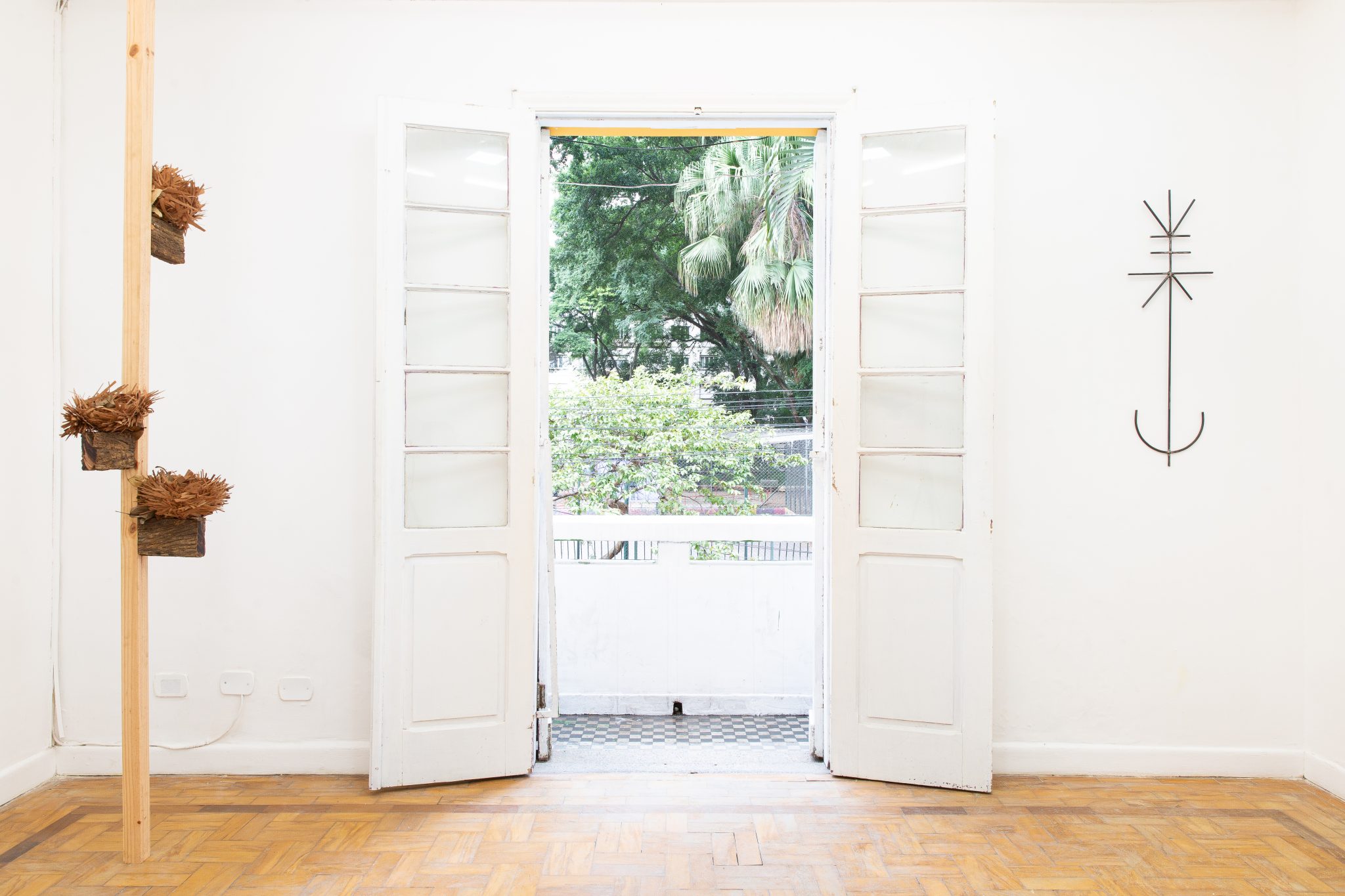A new group show at Espaço Delirium, São Paulo follows the trip rock maestros Lula Côrtes and Zé Ramalho made along the Ingá River to explore knowledge, how it can accumulate and how it can be lost
In 1975 the two godfathers of Brazilian psychedelia, musicians Lula Côrtes and Zé Ramalho, packed a bag with magic mushrooms and not much else and embarked on a trip through the state of Paraíba. Their destination was the Ingá Stone, located in the middle of the Ingá River, a winding Brazilian waterway that meets the Atlantic at the easternmost point of the Americas. If this auspicious location wasn’t charged enough, it’s also a highly decorated edifice, the rock’s surface carved with an intricate map of symbols made by those who lived near the river as far back as 10,000 BCE. The scratched stars, swirls and circles with appended crosses – represented in this tight group show by curator and artist Tiago Malagodi’s series of charcoal frottage prints made from the rock’s surface – are assumed to relate to the night sky, perhaps as a proto-astronomer’s chart. But their meaning and purpose remain ultimately unknowable.
Knowledge and how it travels, where it gets lost on the journey and where and how it accumulates, are some of the threads underpinning Paêbirú, which borrows its title from the legendary 1975 album Côrtes and Ramalho made after their trip. Thiago Costa’s iron wall sculpture Flecha para dentro (2022), in the first of the gallery’s two rooms, evokes the Exu, the trident symbol of Candomblé. In this context it speaks to how the Afro-Brazilian religion was forged through forced migration, a spiritualism founded in the lower decks of enslaver ships, fusing disparate African religions as well as elements of Roman Catholicism. Mônica Ventura’s Canto (2024) is a length of vertical wood stretching up to just shy of the gallery ceiling on which three nests of wood shavings are attached, each cossetting an egg – a metaphor for the moment in which all journeys begin. Paulo Nimer Pjota’s Geométrico com vaso (2022) seems pictorially simple enough at first glance: a black shiny goblet, its exact origin and culture undetermined, but archaeological and ancient in nature, is depicted in acrylic in the upper half of a bisected canvas. It’s an image that sits neatly with Raphael Oboé’s 2023 untitled bust of a jug-eared man that stands on a museological pedestal next to the painting. The lower half of Pjota’s canvas is covered with a sheet of orange enamelled, slightly dented scrap metal on which the artist has painted three squares, each containing Op art-style black and white parallel lines swirling into vanishing points. This abstraction sits in marked contrast to the realism of the goblet – and indeed the other work in this room – but tees up the videowork that lies in the second part of the show.

Alessandra Bergamaschi and Rudá Babau’s Jojabá (2024) is a 17-minute glitchy collage of computer-game-like animation, live footage and found imagery depicting a speculative point-of-view journey across the Brazilian interior via a single mythical Indigenous path, narrated by a tapestry of English and Portuguese academic and literary texts read by a text-to-voice app, as well as interviews with archaeologists. It’s a journey mapping more questions than certainties as the viewer is toured through a series of archaeological and geological oddities: “objects without memory”, as they are described. There’s a general sense that all knowledge is speculation: “intelligence is predicting future observations from past observations”. After Paêbirú was released as a small pressing, most of the album’s copies were lost to a flood and its authors fell out, thwarting any reissue for decades. The project was left only as a trip-tinged folk memory that nonetheless snowballed into an entire musical movement: evidence perhaps, as this show also posits, that sometimes the most powerful form of knowledge is imaginative and mythological rather than empirical or material.
Paêbirú at Espaço Delirium, São Paulo, through 11 May
